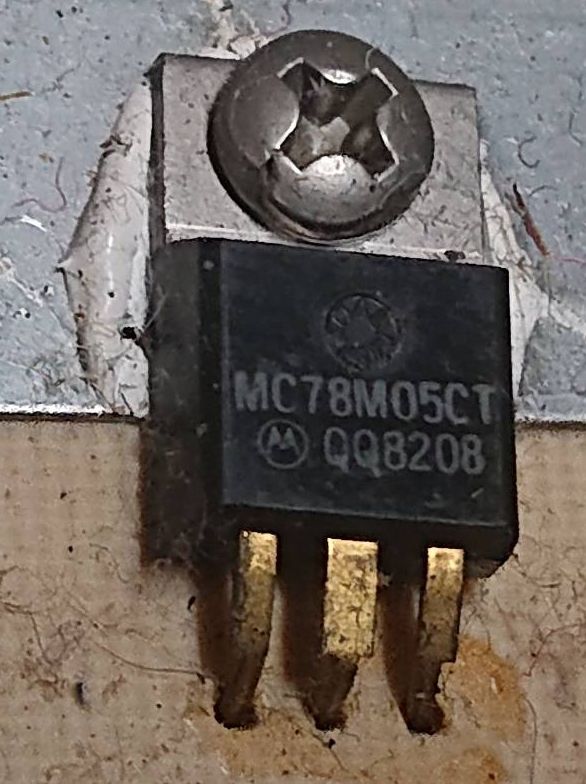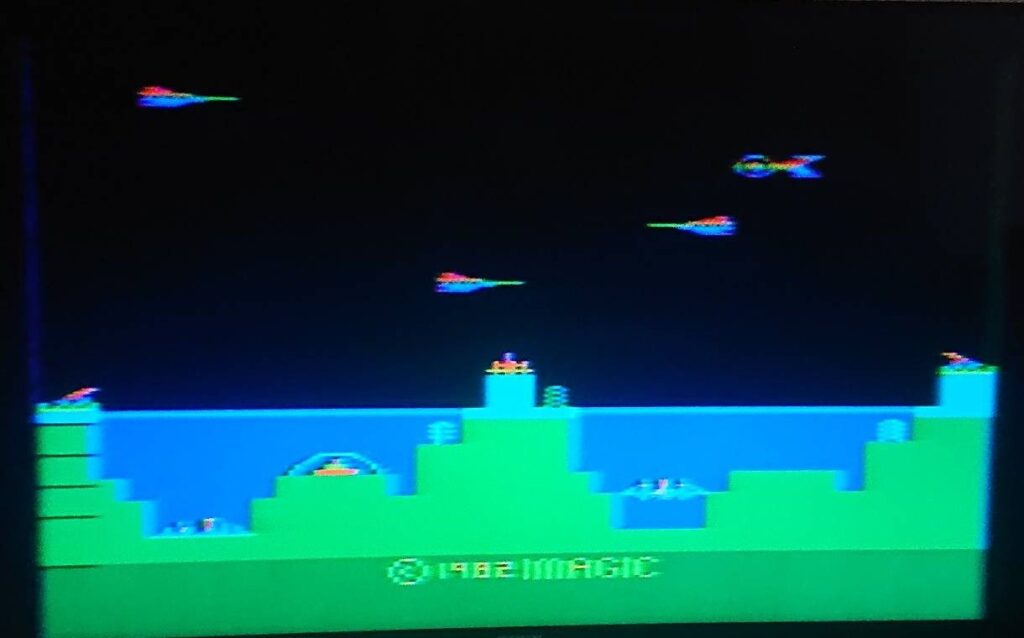Atari VCS – CX2600 (light sixer) refresh and video composite mod
7.07.2023 Added info about UAV board as an alternative to composite/s-video mod and removed info about 820Ohm color boost on TIA. Turns out that I had to remove it, because color saturation boost resistor was already there.

Didn’t plan it, out of blue I’ve got hold of Atari 2600 light sixer (also called VCS – Video Computer System). It is from second generation of consoles, which started gaming revolution and also crashed it in ’83 in a spectacular way .
It had alot of versions and knock offs and sold roughly 30 millions of units.Of course this gaming revolution didn’t catch up here, because we were behind iron curtain, so VCS wasn’t popular in Poland (we had other revolutions on mind and one with “gaming” keyword wasn’t the one). Maybe it gained little popularity in 90’s, when chinese guys started to clone it years after it’s time of glory and sold it very cheaply. Do you remember “Rambo – TV game“? It was VCS in disguise. I’ve missed this trend too, I had only brief contact with original VCS in early 80’s, later first 8/16-bit computers came in, so it turned out to be not very influential for me, but for rest of the world it certainly was…
Inspection
VCS was in a decent shape, when I’ve got hold of it. Firstly I was not very sure if it was PAL or NTSC version. But it’s NTSC, because my TV set switched automatically to NTSC when I turned it on with a cartridge and it didn’t want to display anything correctly on any forced PAL variant. Also serial number with manufacturer name reaffirms it after reviewing this list – it was made in Hong Kong and serial roughly matches NTSC range. How could I expect PAL from an american console? :) Of course PAL / SECAM versions were produced and sold, but I think it wasn’t that many.

It worked fine too (still is…):

Console is from 1977, but this particular unit is from ’82, so it was produced roughly 5 years after initial launch (if stamp on shielding didn’t lie). 41 years old..

Here’s interior:

Old, dirty voltage regulator:

I’ve run my standard procedure i.e. full disassembly and thorough cleaning of the case and pcb’s.

I’ve used contact cleaner on joystick ports, switches, cartridge port and chip sockets (there are only three), left them for a while and used antistatic brush on them. Afterwards I washed everything with universal cleaner for electronics and isopropyl alcohol.



I’ve replaced voltage regulator with 7805 (in place of MC78M05CT, which outputs 0,5A) and applied new thermal compound and replaced three capacitors (2 x 4,7uF 35V, 2200uF 16V). Not much in comparison to other machines I’ve made before…
Video output correction options
Next step was installation of composite video output and getting rid of RF modulator. I’ve got one composite video mod from tfw8b website (it didn’t require to cut case), but this can be done also with few simple components and small proto board.
There also other options like:
- 2600RGB by Tim Worthington (of NESRGB/N64 fame), which gives RGB output, which is much better than composite video signal. Unfortunately board is very expensive. Additionally you have to add to this p&p and import fees from Australia and … is no longer available. Board designer has stated that manufacture of 2600RGB is not feasible in it’s current form and he is working on better solution..
- CleanComp, which gives composite and S-Video outputs and plugs directly on TIA chip (Television Interface Adaptor) and bypasses internal video circuit, so requires no internal modifications: CleanComp installation video
- Atari Ultimate Video Board 2600 by Bryan Edewaard, which bypasses video circuit gives composite and S-Video signal, but installation looks more complicated. It looks like board is designed not only for Atari 2600, but other 8-bit Atari’s as well.
Composite video mod installation
Several elements had to be removed – RF modulator (along with RF modulator cinch socket soldered to mainboard), R209, L201, Q202, R216.

The only thing left was to solder supplied cable with a plug to Atari 2600 pcb and test if console works with composite output.

Of course there were some issues along the way. In my Atari VCS pcb version wasn’t exactly the same as light sixer from tfw8b composite mod instructions. Turned out that I’ve got no color on composite output on Philips CRT monitor. For sure CRT was PAL only and couldn’t decode NTSC color input.

Color was displayed only on newer LCD TVs, although composite signal with color wasn’t great and I’ve got some artifacts probably due to internal video scalers, but it’s better than through RF module.
There is one modification suggested in Atari VCS Field Manual, which supposed to improve color. 820Ohm resistor had to be soldered across pins 6 and 9 of TIA under the board. If you don’t have it, you should probably add it if you don’t plan to install UAV board for instance..
Additionally mini jack plug of a cable supplied with composite mod board had to be adjusted to fit through case back hole, which was previously occupied by RF cable.
UNOCART
I’v also got UNOCART from Zaxxon to easily load official and homebrew roms. Turned out that the case isn’t compatible with “Woody” / “Vader” VCS console variants and I had to cut case with multitool – 11 x 2mm cut on both sides was enough. Without it I couldn’t insert UNOCART into a cartridge port. Why this isn’t already done? I don’t know, probably it should..


I’ve got whole A2600 collection of ROMs from Atarimania.
Reassembly

And we have got:




Still I have CX40 joysticks and paddles to review and repair, but I will save it for another time… Didn’t have free microSD card..
About this entry
You’re currently reading “Atari VCS – CX2600 (light sixer) refresh and video composite mod,” an entry on [nokturnal].
- Published:
- 6 July 2023 7:45 PM
- Category:
- hardware, VCS / 2600, Hardware modifications, News


Comments are closed
Comments are currently closed on this entry.